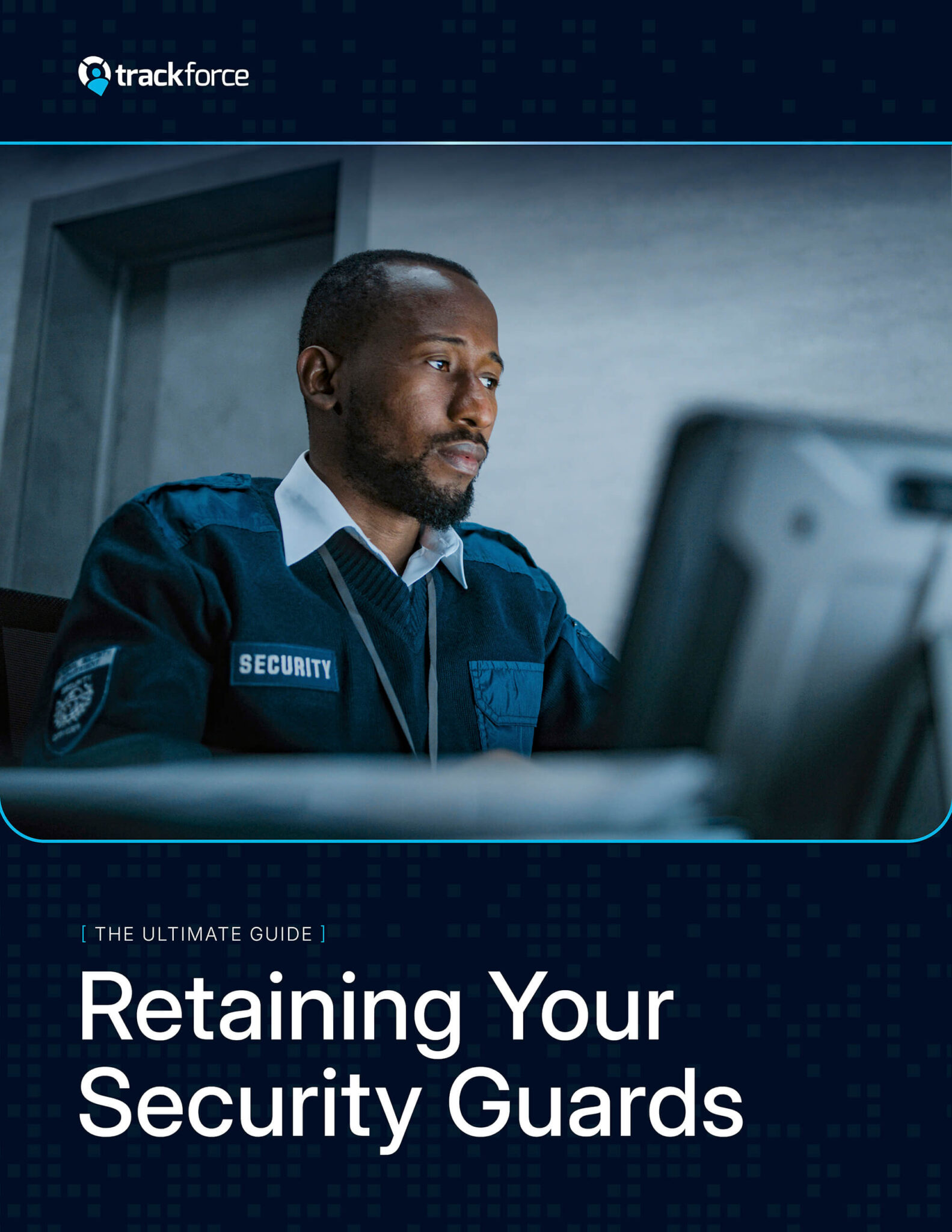
Cut Non-Billable Overtime Costs with Smarter Security Workforce Management
Over 85% of client agreements don’t allow overtime payment, and any overtime earned by guards is considered non-billable. This is a challenge for security firms who have to cover the gap, but it’s also a great place to find more ways to save.
Trackforce’s industry-leading security workforce management platform, TrackTik, helps reduce non-billable overtime without cutting back on the quality of service. Let’s learn more about non-billable overtime, what a platform like TrackTik can do to help, and what steps you can take to cut related costs.
What are non-billable overtime hours?
When working in the security industry, non-billable hours include time spent on administrative tasks, training, and overtime hours not reimbursed by clients.
- Administrative – This includes a range of activities including manual schedule creation, payroll processing, internal meetings, and routine paperwork.
- Training – Time spent in training sessions that are not client-mandated or reimbursed falls into the non-billable category – even when training is necessary.
- Excessive overtime – It’s considered excessive when a security officer works more than their standard hours and the overtime pay can’t be passed on to the client.
Unfortunately, these non-billable hours quietly eat into a company’s profitability. Unstructured scheduling, unexpected absences from work, plus manual tasks can all add to the issue.
Why are non-billable hours a concern for security companies?
Unchecked overtime negatively affects guard morale and productivity, and it leads to higher turnover. Guards need to be alert and on top of their game, and that level of awareness can’t be maintained if people are overworked. Not only is there the personal aspect, but there’s the financial loss. Security Magazine estimates that just a lack of scheduling visibility causing overtime can reduce profit by 12%.
What can be done? Companies can find out why these overtime costs are happening and find ways to prevent them.
How security workforce management platforms can cut non-billable hours
Security workforce management platforms can help companies with overtime costs, since they provide a suite of tools that work together to improve the way you do business.
Consider how these features could help:
Automated scheduling: By automating shift assignments, these platforms create schedules to reduce the need for overtime, taking into account officer availability, qualifications, and site requirements.
Real-time tracking: The ability to monitor guards in real-time provides accurate data for payroll and helps you comply with labor regulations.
Analytics and reporting: By identifying trends in overtime, you can make decisions supported by data that improves your scheduling and resource allocation.
Through more efficient scheduling and oversight, you get fewer non-billable hours – and the cost savings. Plus, this means you can also respond to client needs without putting more of a burden onto your existing security team. As a result, you have lower costs and better use of your company resources.
Let’s look at the steps you can take to get started.
Practical steps to reduce non-billable overtime
1. Let technology work for you
Think about all the time your team spends building schedules and fixing payroll errors. Platforms with Trackforce are designed to handle this for you. With automation, you can help get rid of repetitive tasks like manual work. Not only can your admin team work faster, but you can also cut down on human errors that lead to extra unbilled hours.
2. Build better schedules
Let data guide your decisions, so you don’t end up with last-minute overtime. Many platforms have predictive scheduling tools that can forecast potential no-shows or last-minute requests. This allows you to plan better – without having to scramble and pay for non-billable coverage.
3. Train your team for time management
Giving managers and supervisors the right training can help them make smarter decisions that prevent unnecessary overtime. It’s also a great idea to offer ongoing education on how to get the most out of your security workforce management software. The more comfortable your team is with the technology, the better they’ll be using its features.
4. Monitor and review numbers
Start by setting clear goals for your billable hours and labor costs. Then, use the analytics tools to see how you’re tracking. Regularly reviewing these numbers will show you exactly where you’re losing money – and where you can make adjustments for better results.
5. Talk openly with your clients
Clear communication can prevent problems. Make sure your client contracts spell out exactly what is billable, since this cuts down on the chance of disagreements. You can also give clients access to a portal where they can see real-time updates. This level of transparency not only shows you’re trustworthy, but it also showcases the value of your services.
From 5% to 1%: How SFM Security Slashed Overtime Costs
SFM Security serves 60 client sites in South Florida, and they have been in business since 1992. SFM Security was using software where the hours worked were separated from payroll, and this resulted in non-billable overtime issues. They turned to TrackTik.
TrackTik scheduling features helped SFM cut costs, since they could automate timekeeping and improve scheduling practices. In fact, SFM kept non-billable overtime at 1% – much lower than the industry standard of 5%.
Next steps
Understanding and managing non-billable hours is a good plan for any security firm. Security workforce management platforms provide the tools to improve scheduling practices, cut down on administrative errors, and reduce overtime costs. By investing in technology, you can improve the workplace environment for your security team while also improving your profit margins.
Get a demo
See how we can help you cut down on non-billable overtime. Schedule a demo today!
Frequently Asked Questions

Want to understand all the factors driving guard turnover?
Download our comprehensive “Ultimate Guide to Retaining Your Security Guards” for actionable insights.
